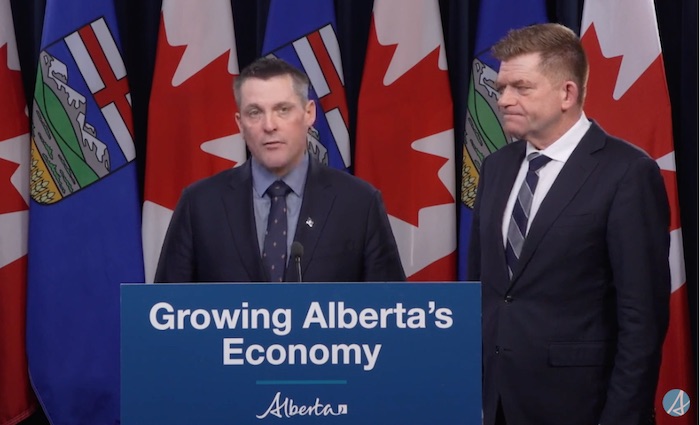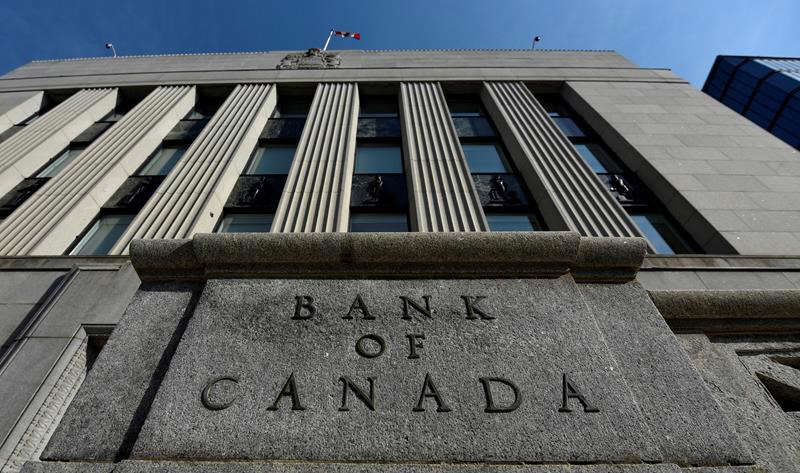Agriculture
Province announces massive commitments to rural Alberta

Building up the rural Alberta economy
Alberta’s government has unveiled a plan to drive economic growth and address challenges unique to rural communities.
Rural Alberta is a driving force in the economy and the new Economic Development in Rural Alberta Plan will complement current government initiatives while supporting diversification and job opportunities in rural communities.
The five-year plan focuses on key issues in rural Alberta, including economic development-enabling infrastructure, rural business supports and entrepreneurship, support for labour force and skills development, marketing and promoting rural tourism, and rural economic development capacity building.
“Rural Albertans face unique economic barriers and challenges that require a different approach than their urban neighbours. The Economic Development in Rural Alberta Plan charts a path forward that will address these issues and build on our commitment in Budget 2022 to support sustainable growth and diversification in rural Alberta.”
As one of the first tangible actions under the plan, the government has committed $125,000 to each of the eight regional economic development alliances to support long-term economic prosperity in their respective regions.
“With strengths in oil and gas, agriculture and forestry, tourism and emerging technologies, Alberta’s rural and northern communities are the backbone of our province’s economy. Actions identified in this plan will benefit rural and northern Albertans for years to come, including providing additional support to Alberta’s network of regional economic development alliances to fuel further economic growth and prosperity across our province.”
The Announcement
Engaging with rural Albertans
The plan was created after a year of consultations. Beginning in fall 2021, Alberta’s government held targeted sessions with rural Alberta businesses and communities, in addition to Indigenous communities, to identify the specific challenges and possible solutions facing their regions.
In total, government hosted 23 virtual engagement sessions with more than 370 rural Albertans, businesses and communities, receiving 3,500 comments. At the same time, an online survey was conducted, which received an additional 919 responses.
Feedback from the sessions and the online survey helped develop the plan’s vision, guiding principles and strategic directions. These were refined and validated through a second phase of targeted engagement with the same individuals and groups in summer 2022.
“Regional economic development alliances are strategically structured to collaborate with governments to address key issues in rural Alberta. Our first step is to identify and improve economic development and enable infrastructure to support investment and growth in rural Alberta. Once we initiate this step, we can further support rural businesses, increase the labour force and market a stronger rural Alberta to Canada and the rest of the world. We look forward to moving forward with the Economic Development in Rural Alberta Plan and continued collaboration with the Government of Alberta.”
“As a leading advocate for our province’s towns and villages, Alberta Municipalities is pleased to see the provincial government focus on the unique needs of Alberta’s smaller and more remote communities. We welcome efforts to grow and diversify our province’s economy, including renewed support for regional economic development alliances.”
“For well over a century the Rural Municipalities of Alberta has helped rural municipalities achieve strong, effective, local government. The Economic Development in Rural Alberta Plan supports our mission to strengthen rural Alberta and cultivate strategic and collaborative partnerships. This plan starts today and is designed for the rural Alberta of tomorrow.”
Quick facts
- The plan focuses on five key strategic directions:
- Identifying and improving economic development-enabling infrastructure to support investment and growth in rural Alberta.
- Advancing entrepreneurship capacity and a culture of innovation across rural Alberta.
- Enabling skills development in rural communities to enhance workforce capacity today and for the future.
- Enhancing rural Alberta’s reputation and capacity as a diverse tourism destination.
- Enhancing rural economic development through regional and targeted capacity building.
- The plan will complement a number of initiatives that demonstrate the government’s commitment to building healthy and prosperous communities across rural Alberta, including:
- Up to $390 million over four years as part of the Alberta Broadband Strategy to eliminate the digital divide for all Albertans.
- Nearly $933 million for irrigation infrastructure in partnership with nine irrigation districts to expand and modernize Alberta’s irrigation infrastructure.
- $78 million to fund 133 active capital maintenance and renewal projects in rural Alberta communities.
- A $59-million investment to expand veterinary medicine at the University of Calgary, doubling the number of seats in the program to address a critical shortage of large animal veterinarians in rural Alberta.
- $70 million for the Film and Television Tax Credit that will attract major productions to the province, diversifying the economy and creating thousands of new jobs.
- More than $8 million through the Indigenous Opportunities Corporation to support Indigenous communities’ participation in commercially viable resource projects to support rural economic growth.
Agriculture
Canada’s air quality among the best in the world

From the Fraser Institute
By Annika Segelhorst and Elmira Aliakbari
Canadians care about the environment and breathing clean air. In 2023, the share of Canadians concerned about the state of outdoor air quality was 7 in 10, according to survey results from Abacus Data. Yet Canada outperforms most comparable high-income countries on air quality, suggesting a gap between public perception and empirical reality. Overall, Canada ranks 8th for air quality among 31 high-income countries, according to our recent study published by the Fraser Institute.
A key determinant of air quality is the presence of tiny solid particles and liquid droplets floating in the air, known as particulates. The smallest of these particles, known as fine particulate matter, are especially hazardous, as they can penetrate deep into a person’s lungs, enter the blood stream and harm our health.
Exposure to fine particulate matter stems from both natural and human sources. Natural events such as wildfires, dust storms and volcanic eruptions can release particles into the air that can travel thousands of kilometres. Other sources of particulate pollution originate from human activities such as the combustion of fossil fuels in automobiles and during industrial processes.
The World Health Organization (WHO) and the Canadian Council of Ministers of the Environment (CCME) publish air quality guidelines related to health, which we used to measure and rank 31 high-income countries on air quality.
Using data from 2022 (the latest year of consistently available data), our study assessed air quality based on three measures related to particulate pollution: (1) average exposure, (2) share of the population at risk, and (3) estimated health impacts.
The first measure, average exposure, reflects the average level of outdoor particle pollution people are exposed to over a year. Among 31 high-income countries, Canadians had the 5th-lowest average exposure to particulate pollution.
Next, the study considered the proportion of each country’s population that experienced an annual average level of fine particle pollution greater than the WHO’s air quality guideline. Only 2 per cent of Canadians were exposed to fine particle pollution levels exceeding the WHO guideline for annual exposure, ranking 9th of 31 countries. In other words, 98 per cent of Canadians were not exposed to fine particulate pollution levels exceeding health guidelines.
Finally, the study reviewed estimates of illness and mortality associated with fine particle pollution in each country. Canada had the fifth-lowest estimated death and illness burden due to fine particle pollution.
Taken together, the results show that Canada stands out as a global leader on clean air, ranking 8th overall for air quality among high-income countries.
Canada’s record underscores both the progress made in achieving cleaner air and the quality of life our clean air supports.
Agriculture
Health Canada pauses plan to sell unlabeled cloned meat

From LifeSiteNews
Health Canada has indefinitely paused its plan to allow unlabeled cloned meat in grocery stores after thousands of Canadians, prominent figures, and industry leaders condemned the move.
Health Canada is pausing its plan to put unlabeled cloned meat in Canadian grocery stores, following public outcry.
In a November 19 update on its website, Health Canada announced an indefinite suspension of the decision to remove labels from cloned meat products after thousands of Canadians condemned the plan online.
“The Government of Canada has received significant input from both consumers and industry about the implications of this potential policy update,” the publication read. “The Department has therefore indefinitely paused the policy update to provide time for further discussions and consideration,” it continued, adding, “Until the policy is updated, foods made from cloned cattle and swine will remain subject to the novel food assessment.”
In late October, Health Canada quietly approved removing labels from foods derived from somatic cell nuclear transfer (SCNT) clones and their offspring. As a result, Canadians buying meat from the grocery store would have had no way of knowing if the product was cloned meat.
Many researchers have documented high rates of cloning failure, large offspring syndrome (LOS), placental abnormalities, early death, and organ defects in cloned animals. The animals are also administered heavy doses of antibiotics due to infections and immune issues.
Typically, the offspring of cloned animals, rather than the cloned animals themselves, are processed for human consumption. As a result, researchers allege that the health defects and high drug use does not affect the final product.
However, there are no comprehensive human studies on the effects of eating cloned meat, meaning that the side-effects for humans are unknown.
News of the plan spread quickly on social media, with thousands of Canadians condemning the plan and promising to switch to local meat providers.
“By authorizing the sale of meat from cloned animals without mandatory labeling or a formal public announcement, Health Canada risks repeating a familiar and costly failure in risk communication. Deeply disappointing,” food policy expert and professor at Dalhousie University Sylvain Charlebois wrote on X.
"By authorizing the sale of meat from cloned animals without mandatory labeling or a formal public announcement, Health Canada risks repeating a familiar and costly failure in risk communication. Deeply disappointing."
More on this week's Food Professor Podcast! https://t.co/UZTIcQzUN3
— The Food Professor (@FoodProfessor) October 30, 2025
Likewise, Conservative MP Leslyn Lewis warned, “Health Canada recently decided that meat from cloned animals and their offspring no longer needs a special review or any form of disclosure.”
“That means, soon you could buy beef or pork and have no idea how it was bred,” she continued. “Other countries debate this openly: the EU has considered strict labelling, and even the U.S. has admitted that cloned-offspring meat is circulating.”
“But here in Canada, the public wasn’t even told. This is about informed choice,” Lewis declared. “If government and industry don’t have to tell us when meat comes from cloned animals, then Canadians need to ask a simple, honest question: What else are we not being told?”
Health Canada recently decided that meat from cloned animals and their offspring no longer needs a special review or any form of disclosure. That means, soon you could buy beef or pork and have no idea how it was bred.
Other countries debate this openly: the EU has considered… pic.twitter.com/zCnqJOpvf3
— Dr. Leslyn Lewis (@LeslynLewis) November 14, 2025
Likewise, duBreton, a leading North American supplier of organic pork based out of Quebec, denounced the move, saying, “Canadians expect clarity, transparency, and meaningful consultation on issues that directly touch their food supply. As producers, we consider it our responsibility and believe our governing food authorities should too.”
According to a survey conducted by duBreton, 74 percent of Canadians believe that “cloned meat and genetic editing practices have no place in farm and food systems.”
-

 MAiD2 days ago
MAiD2 days agoFrom Exception to Routine. Why Canada’s State-Assisted Suicide Regime Demands a Human-Rights Review
-

 Business2 days ago
Business2 days agoCarney government should privatize airports—then open airline industry to competition
-

 Business2 days ago
Business2 days agoWhat’s Going On With Global Affairs Canada and Their $392 Million Spending Trip to Brazil?
-

 Energy1 day ago
Energy1 day agoCanada following Europe’s stumble by ignoring energy reality
-

 Business2 days ago
Business2 days agoWhy Does Canada “Lead” the World in Funding Racist Indoctrination?
-

 Business1 day ago
Business1 day agoLoblaws Owes Canadians Up to $500 Million in “Secret” Bread Cash
-

 Banks1 day ago
Banks1 day agoTo increase competition in Canadian banking, mandate and mindset of bank regulators must change
-

 Media2 days ago
Media2 days agoThey know they are lying, we know they are lying and they know we know but the lies continue








